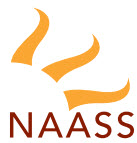 Last month, we were invited to join a panel about digital marketing and social media for education at the New England division of the North American Association of Summer Sessions annual conference. Twenty directors and deans of regional summer sessions participated in the event, hosted by Yale in New Haven. The Q&A session shed light on some of the difficulties colleges and universities face each year when trying to work within tight marketing budgets, or in many instances, no marketing budget at all.
Last month, we were invited to join a panel about digital marketing and social media for education at the New England division of the North American Association of Summer Sessions annual conference. Twenty directors and deans of regional summer sessions participated in the event, hosted by Yale in New Haven. The Q&A session shed light on some of the difficulties colleges and universities face each year when trying to work within tight marketing budgets, or in many instances, no marketing budget at all.
Moderated by the Dean of Yale Summer Session, William Whobrey, the panel jumped right in discussing the pros and cons of social media marketing. Many attendees were concerned that their efforts are not effective.
“Do I need to take into account the time of day when tweeting?” asked one audience member.
“Should we be on Instagram too?” asked another.
One lady echoed a popular notion, “My social media team is saying that young people are done with Facebook, and the only people left on the network are 40 year-old mothers.”
We assured everyone that their social media efforts are still relevant and necessary marketing tools. Twitter and Facebook are still very popular among their target audience, high school and college students. More importantly, social media allows us to engage members. Too often social media posts talk at users rather than engage with them. It’s the difference between “We’re offering courses in 16 countries this summer! Visit our website to see more.” and “If you could study abroad anywhere in the world, where would it be? We pick Barcelona!” As we reminded the audience, social media is conversation – so be conversational!
Twitter recently announced that its advertising platform—previously only available to big brands—is now open to all US advertisers. We were excited to deliver this news to the NAASS conference attendees as it gives them a cost-effective option to get their message to a highly targeted audience. Twitter’s campaign tool lets marketers use promoted tweets to target users based on their geo-location, interests, gender, or device, all on a cost-per-click basis.
But the point we drove home was this: no matter which digital marketing initiatives you have in place, the best way to determine the value of each initiative is to track conversions. Google Analytics allows you to do so (at no cost!) by inserting a small piece of code into the last step of your online application, usually the “thank you for applying” or “application submitted” page. If your application is hosted on a separate dotcom–fear not–Google allows for cross-domain tracking. Once the code is inserted, they track each conversion, and more importantly, the path that each user takes to get to you. This allows you to see exactly how many people come via your email blast, organic search, Pay-Per-Click ad, social profile, or other online initiatives. This is enormously useful in budget allocation. We keep an eye on this for our clients and have been able to shift resources mid-campaign to capture more international traffic, or move dollars to strengthen a mobile banner campaign.
You can also see the point at which applicants drop off in the process of applying. This data can help you understand where the applicant is getting confused. An ideal online application anticipates the questions in the order they arise in the student’s mind, and ladders to process to match the questions with the right answers at the right time. So if, for example, you see a lot of traffic jumping back to the home page halfway through a course selection or application process, you may need to look at the information on that page and see if you can tweak it to keep them on track to full conversion. Jumping back to home pages may indicate that they are unsure where to go next and are looking back to your main navigation for guidance. So as we said at the conference, let your data be your guide!
